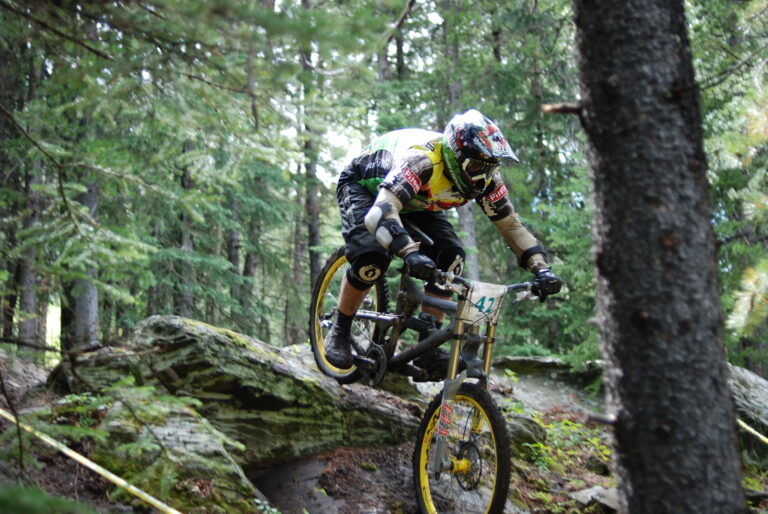General Rules of Powerlifting
Have you ever wondered about the key elements that govern the sport of powerlifting? From weight classes to equipment specifications, the rules of powerlifting encompass various aspects that guarantee fairness and safety during competitions. But did you know there's more to it than just lifting heavy weights? Let's explore the intricacies of powerlifting rules and discover the nuances that can make or break your performance on the platform.
Weight Classes
When competing in powerlifting, you will need to be aware of the various weight classes that determine which division you will compete in. Understanding the weight classes is important as it guarantees fair competition and allows you to compete against others of similar body weight and strength levels. In powerlifting, the weight classes typically range from under 50kg to over 120kg for men and under 43kg to over 84kg for women.
To make sure you meet the weight requirements for your desired class, paying attention to nutrition requirements is essential. Proper nutrition plays a key role in helping you reach your weight goals while maintaining muscle mass and strength. It is important to follow a balanced diet that provides adequate calories to support your training regimen while also helping you achieve your target weight for weigh-ins.
Weigh-in procedures are strict in powerlifting competitions, and you must adhere to the specified weigh-in times to qualify for your chosen weight class. Mental preparation is key during this period, as it can be stressful trying to make weight. Additionally, hydration strategies are important to ensure you are properly hydrated for best performance while also managing your weight effectively. Staying mentally focused and hydrated will help you navigate the weigh-in process successfully and compete at your best in your designated weight class.
Lifting Commands
When performing powerlifting movements, adhering to lifting commands is vital for a fair and safe competition. Proper execution of commands guarantees consistency and standardization across all lifters. Understanding the importance of these commands can greatly impact your performance and overall experience in powerlifting competitions.
Command Execution Techniques
To optimize performance in powerlifting, mastering the execution of lifting commands is essential for achieving success in competition. When it comes to command execution techniques, remember the following:
- Listen attentively: Pay close attention to the commands given by the referees to guarantee proper timing and execution of your lifts.
- Quick response: React promptly to the commands to maintain momentum and prevent unnecessary delays.
- Practice consistency: Train consistently with commands in mind to make them a natural part of your lifting routine.
Importance of Commands
Mastering the execution of lifting commands is important for powerlifters aiming to excel in competition. Judging consistency heavily relies on the strict adherence to these commands, ensuring fair competition and accurate results. The ability to effectively communicate with the judges through prompt and precise actions during lifts is essential for a successful performance. Athletes must understand the importance of listening attentively to the commands given by the officials, as any deviation may result in disqualification or failed attempts. Consistency in following the established commands not only showcases professionalism but also contributes to a smoother flow of the competition. Clear athlete communication through the correct execution of lifting commands is key to a successful powerlifting experience.
Equipment Specifications
In powerlifting, adhering to specific equipment specifications is essential for ensuring fair competition and safety for all participants. To compete effectively and reduce the risk of injury, familiarize yourself with the following guidelines:
- Proper Attire and Safety: When participating in powerlifting competitions, wear suitable attire that allows for a full range of motion and provides ample support. Avoid loose clothing that might impede your lifts or compromise safety. Additionally, confirm that your attire adheres to the competition's rules regarding logos and colors to maintain fairness among participants.
- Required Gear and Measurements: Before competing, make sure you have all the necessary equipment such as a weightlifting belt, knee sleeves, and wrist wraps. Each item must meet specific measurements set by the competition to ensure a level playing field. Familiarize yourself with the equipment regulations to avoid disqualification or performance hindrances on the day of the event.
- Equipment Inspection: Prior to competing, your equipment will undergo inspection to confirm it meets the required specifications. Be prepared to present your gear for evaluation and make any necessary adjustments promptly. By complying with the equipment specifications, you contribute to the integrity of the sport and create a safer environment for all participants.
Proper Form and Technique
When approaching powerlifting, it's essential to master key form principles to maximize your performance. Emphasizing proper technique is paramount in preventing injuries and enhancing your overall strength gains. Stay vigilant for common form mistakes that can hinder your progress in the sport.
Key Form Principles
To execute a successful powerlifting lift, adhering to key form principles is essential for optimizing performance and minimizing the risk of injury. When focusing on form, consider the following:
- Breathing techniques and mental cues: Proper breathing, such as taking a deep breath before lifting and bracing the core, can enhance stability and strength. Mental cues like 'chest up' or 'drive through the heels' help maintain focus and technique.
- Foot positioning and bar grip: Make sure your feet are planted firmly, shoulder-width apart, providing a stable base for lifting. Additionally, a strong and secure grip on the bar is critical for maintaining control throughout the lift.
Technique Importance Emphasized
Emphasizing proper form and technique in powerlifting is essential for maximizing performance potential and reducing the risk of injury. Proper breathing plays a critical role in powerlifting, helping you maintain intra-abdominal pressure to support your spine during heavy lifts. Focus on exhaling during the concentric phase and inhaling during the eccentric phase to optimize your performance. Additionally, barbell control is paramount to guarantee efficient force transfer and stability throughout the lift. Maintain a tight grip on the bar, engage your core muscles, and move with controlled precision to lift heavier weights safely. By mastering these aspects of technique, you not only enhance your strength gains but also safeguard yourself against potential injuries, ultimately empowering your powerlifting journey.
Common Form Mistakes
Several fundamental form mistakes can hinder your powerlifting performance and increase the risk of injury if not addressed properly. Pay close attention to the following aspects to improve your technique:
- Grip Strength: Make sure your grip is secure and even on the barbell to prevent slippage during heavy lifts.
- Breathing Techniques: Important breathing patterns are vital for maintaining intra-abdominal pressure, which stabilizes your core and protects your spine.
- Body Alignment: Maintain a neutral spine position throughout the lift, avoiding excessive arching or rounding, to distribute the load evenly and reduce the risk of injury.
Scoring and Attempts
Understanding how scoring works in powerlifting can greatly impact your performance and strategy during competition. The scoring breakdown in powerlifting is based on the total weight lifted across three main lifts: squat, bench press, and deadlift. Each lifter is allowed three attempts for each lift, and the best successful attempt for each lift is added to their total. Setting records in powerlifting involves surpassing previous records in the specific weight class and lift category.
| Scoring Breakdown | Attempt Strategy |
|---|---|
| Squat | Start with a weight you can comfortably lift to secure a good total. Increase gradually to maximize your final lift. |
| Bench Press | Choose weights that challenge you but are within your capabilities. Make sure you secure a good lift before attempting heavier weights. |
| Deadlift | Begin with a weight that builds your total. Increase strategically to push your limits without risking failed attempts. |
For successful scoring, strategize your attempts wisely. It's important to secure a safe lift to contribute to your total. However, pushing your limits strategically in subsequent attempts can help you achieve a higher score. When planning your attempts, consider your strengths in each lift and aim to maximize your total weight lifted. By understanding the scoring breakdown and implementing a smart attempt strategy, you can optimize your performance and excel in powerlifting competitions.
Warm-up Procedures
To optimize your performance in powerlifting competitions, a structured and efficient warm-up procedure is essential. Proper warm-up routines not only help prevent injuries but also prepare your body and mind for the intense lifts ahead. Here are some key elements to contemplate in your warm-up process:
- Stretching Routines: Begin your warm-up with dynamic stretches that target the muscles you will be engaging during the lifts. Focus on areas like the hamstrings, quadriceps, lower back, and shoulders. Dynamic stretches help improve flexibility and range of motion, priming your body for the heavy loads you will be lifting.
- Mental Preparation: Incorporating mental preparation techniques is critical for best performance. Use visualization techniques to imagine yourself successfully completing each lift. Visualizing success can help build confidence and focus, enhancing your overall performance on competition day.
- Cool Down: Don't overlook the importance of a proper cool down after your lifts. Include static stretches to help relax and lengthen the muscles you've worked during the competition. Cooling down aids in muscle recovery and reduces post-competition soreness.
Drug Testing Protocols
When conducting powerlifting competitions, adherence to strict drug testing protocols is imperative to maintain fairness and integrity within the sport. Performance enhancement through the use of banned substances goes against the fundamental principles of powerlifting, which values strength, skill, and determination. Drug testing protocols are in place to guarantee fair competition, where athletes compete on a level playing field without artificial enhancements skewing the results.
To guarantee fair competition, powerlifting organizations conduct random drug tests leading up to competitions and perform tests on winners to uphold the integrity of the sport. Athletes are responsible for knowing and adhering to the list of banned substances to avoid disqualification and tarnishing their reputation. By enforcing stringent drug testing protocols, powerlifting aims to promote honesty, transparency, and equality among competitors.
The consequences of violating drug testing protocols are severe, ranging from disqualification from the competition to suspension from future events. Athletes should prioritize training, nutrition, and proper recovery methods to enhance their performance naturally, without resorting to illicit substances. Essentially, drug testing protocols in powerlifting serve as a safeguard to ensure that competitions are decided based on raw talent, hard work, and dedication rather than artificial enhancements.
Competition Etiquette
Maintaining decorum and respect towards fellow competitors and officials is paramount in powerlifting competitions, encapsulating the essence of Competition Etiquette. To make certain a smooth and enjoyable experience for everyone involved, it is critical to adhere to the following guidelines:
- Spectator Behavior: Spectators play a significant role in creating the atmosphere of a powerlifting competition. Cheering and showing support for lifters is encouraged, but it is important to do so respectfully. Avoid shouting during a lifter's attempt as it can be distracting and disruptive. Additionally, refrain from making negative or derogatory comments towards any competitor. Remember, the goal is to uplift and motivate the athletes.
- Judging Standards: Respect the decisions made by the judges, even if you may disagree with them. Judges undergo extensive training to ensure fair and consistent rulings during the competition. Questioning or arguing with the judges' calls not only disrupts the flow of the event but also shows a lack of sportsmanship. Trust in the judging process and focus on giving your best performance on the platform.
- General Conduct: Beyond specific rules, general politeness and sportsmanship should guide your behavior throughout the competition. Be courteous to your fellow competitors, officials, and volunteers. Keep the warm-up area tidy and follow instructions promptly. Remember that your actions reflect not only on yourself but also on the entire powerlifting community.
Frequently Asked Questions
How Should Powerlifters Adjust Their Training Leading up to Competition to Ensure Peak Performance?
To guarantee peak performance in powerlifting competitions, adjust your training by focusing on nutrition strategies to fuel your body effectively. Incorporate recovery techniques like adequate rest and mobility work to optimize competition readiness and enhance your performance.
Are There Any Specific Rules or Guidelines for Choosing a Weightlifting Belt or Other Supportive Equipment?
When choosing equipment, consider your comfort, support needs, and the rules of your competition. Weightlifting gear should enhance performance without compromising safety. Experiment with different options in training to find what works best for you.
What Are Some Common Mistakes That Powerlifters Make During Competition That Can Lead to Disqualification?
During competition, powerlifters commonly make mistakes such as improper technique errors leading to disqualification. To avoid this, focus on refining your form, making necessary training adjustments, and optimizing performance to excel.
How Do Powerlifters Typically Handle Setbacks or Injuries During Training or Competition?
When facing setbacks or injuries, powerlifters prioritize injury recovery by adjusting training. They maintain focus on mental preparation, shifting their competition mindset to adapt. By managing setbacks effectively, they aim for continuous improvement.
What Are Some Strategies for Mental Preparation and Focus Before Attempting Heavy Lifts in Competition?
Before attempting heavy lifts in competition, focus on mental preparation. Use visualization techniques to see yourself successfully completing the lift. Practice deep breathing exercises to calm nerves and improve focus. Trust in your training.






